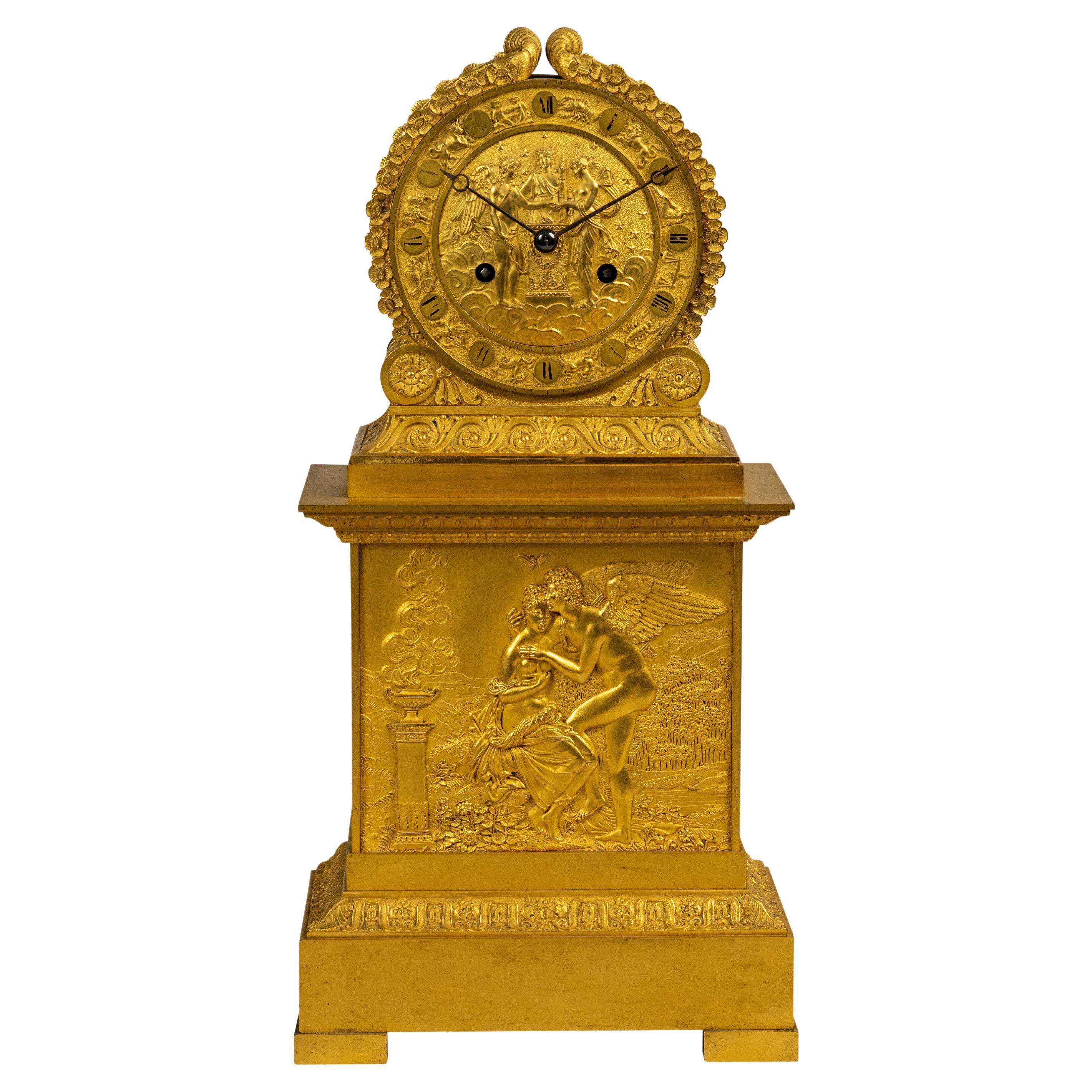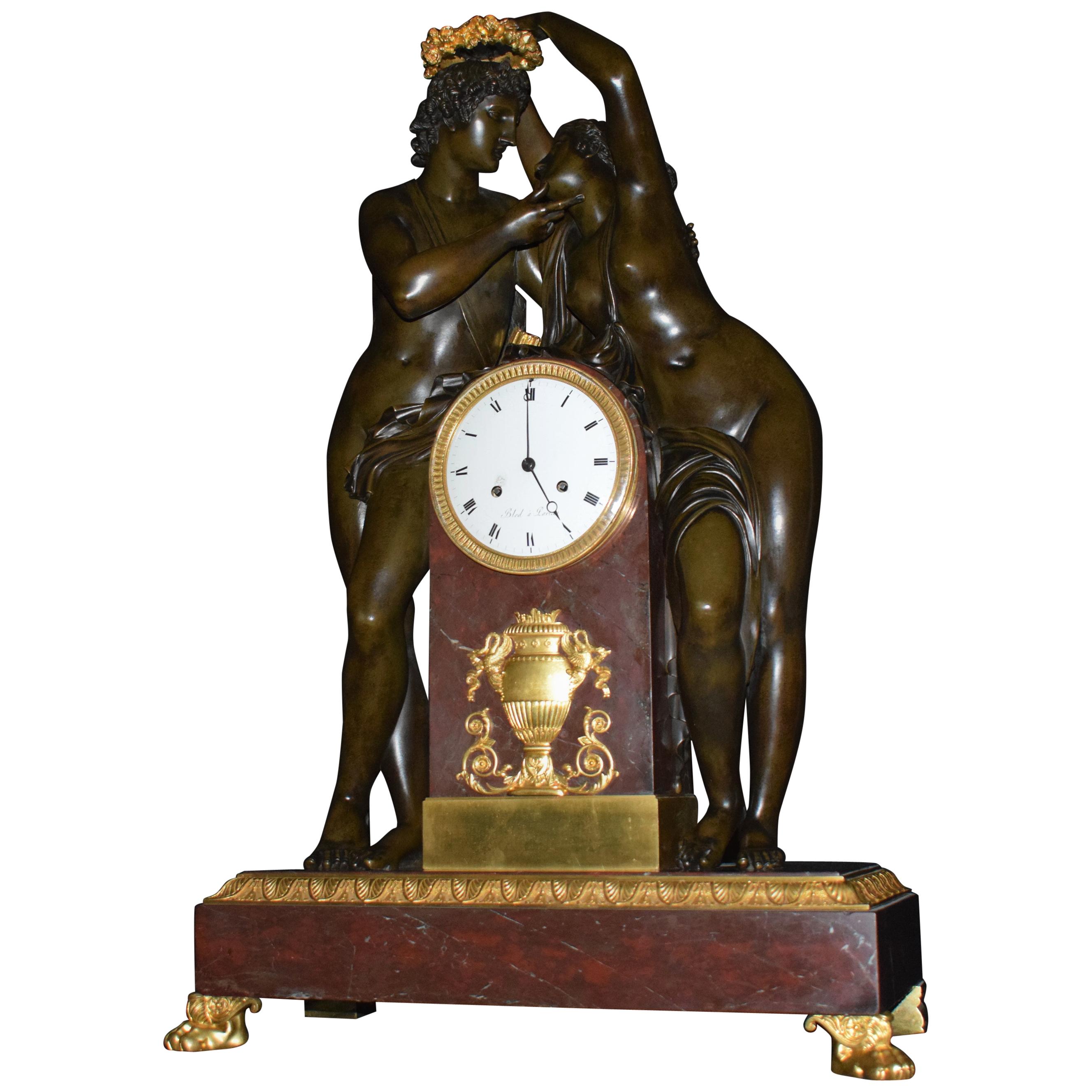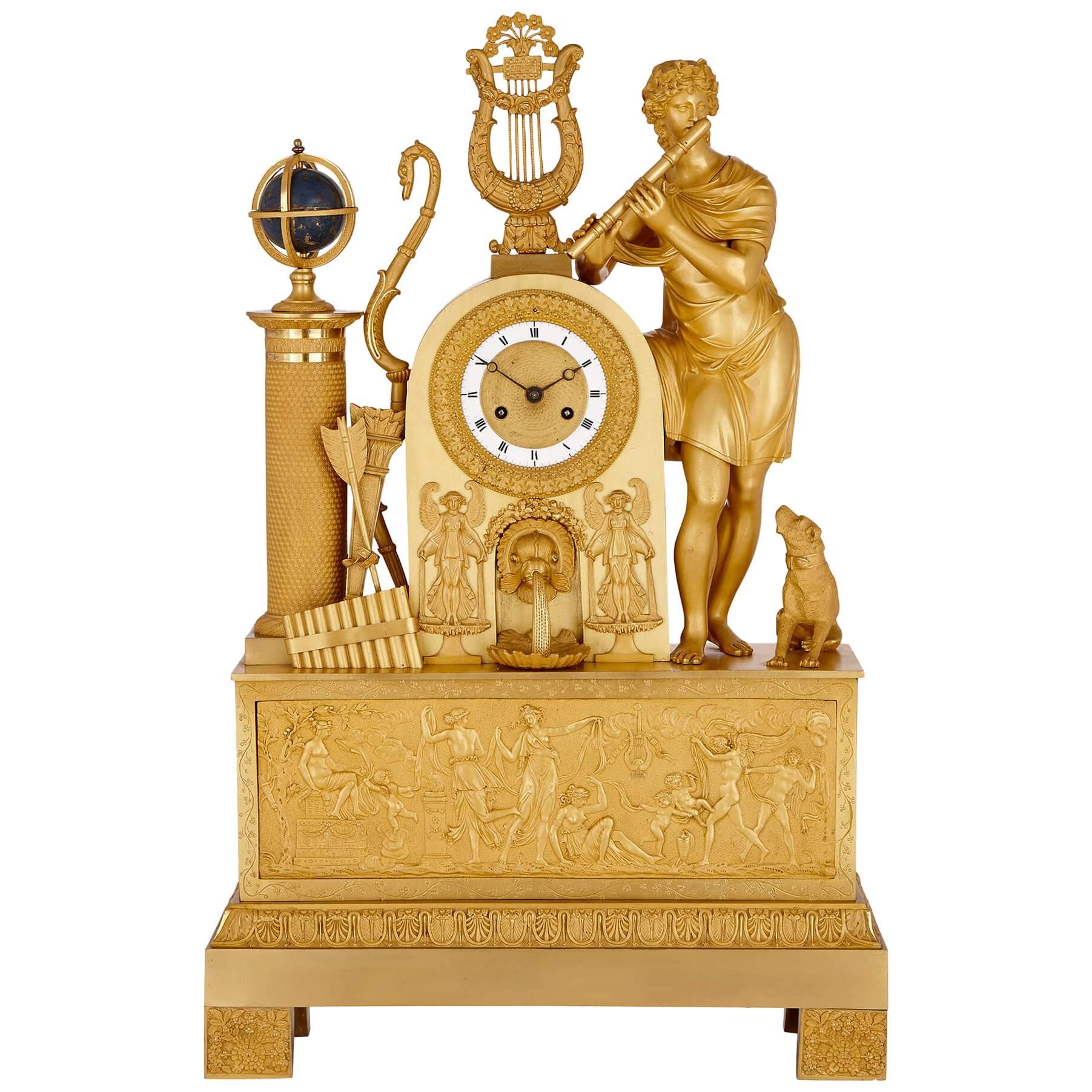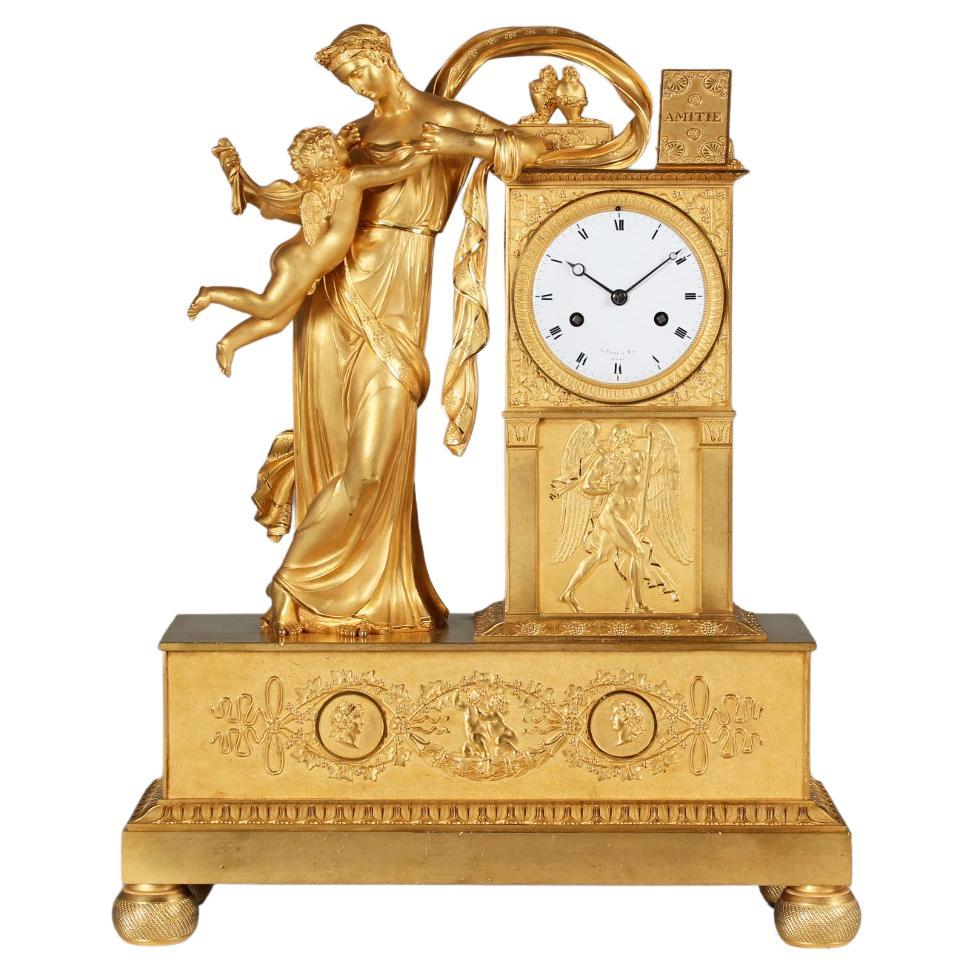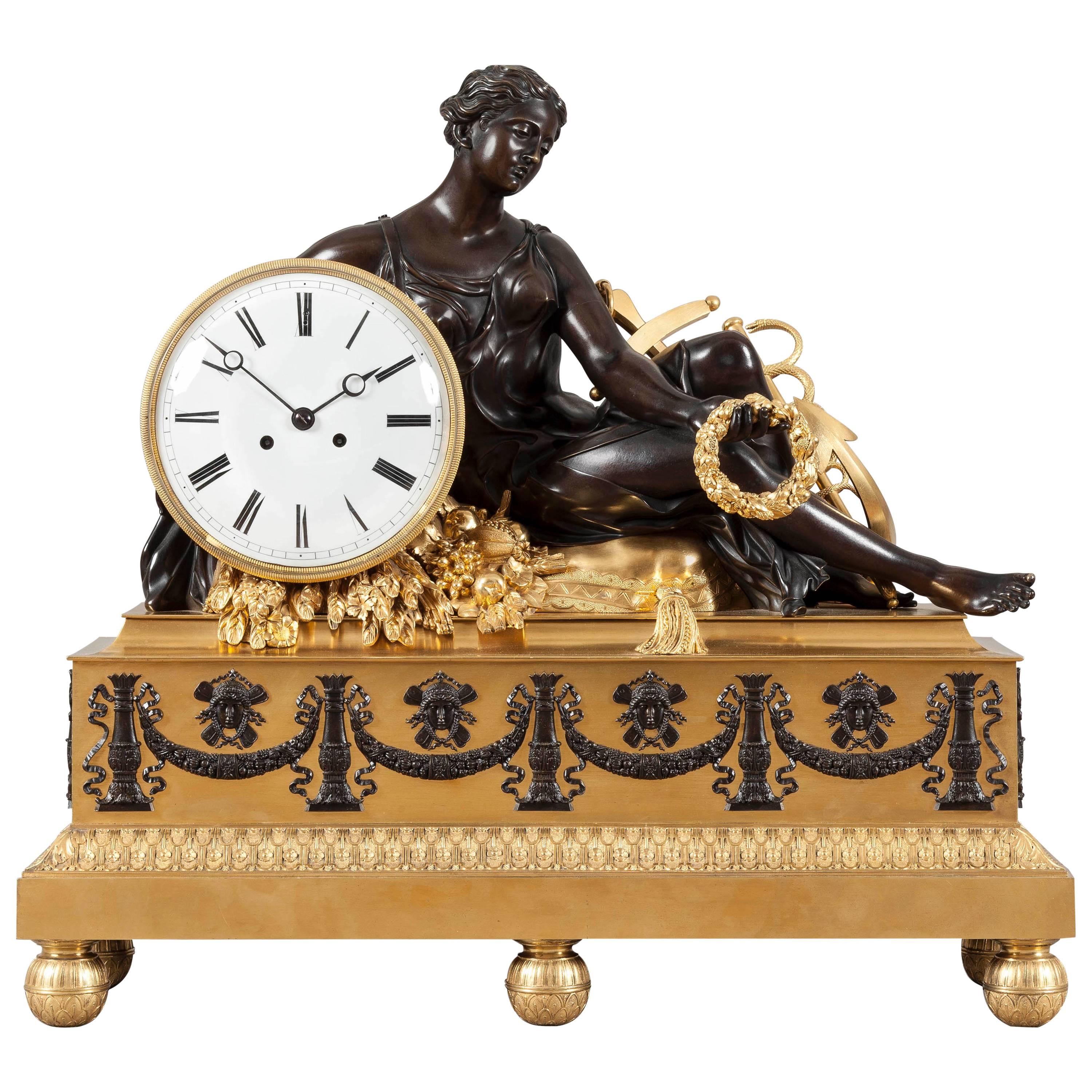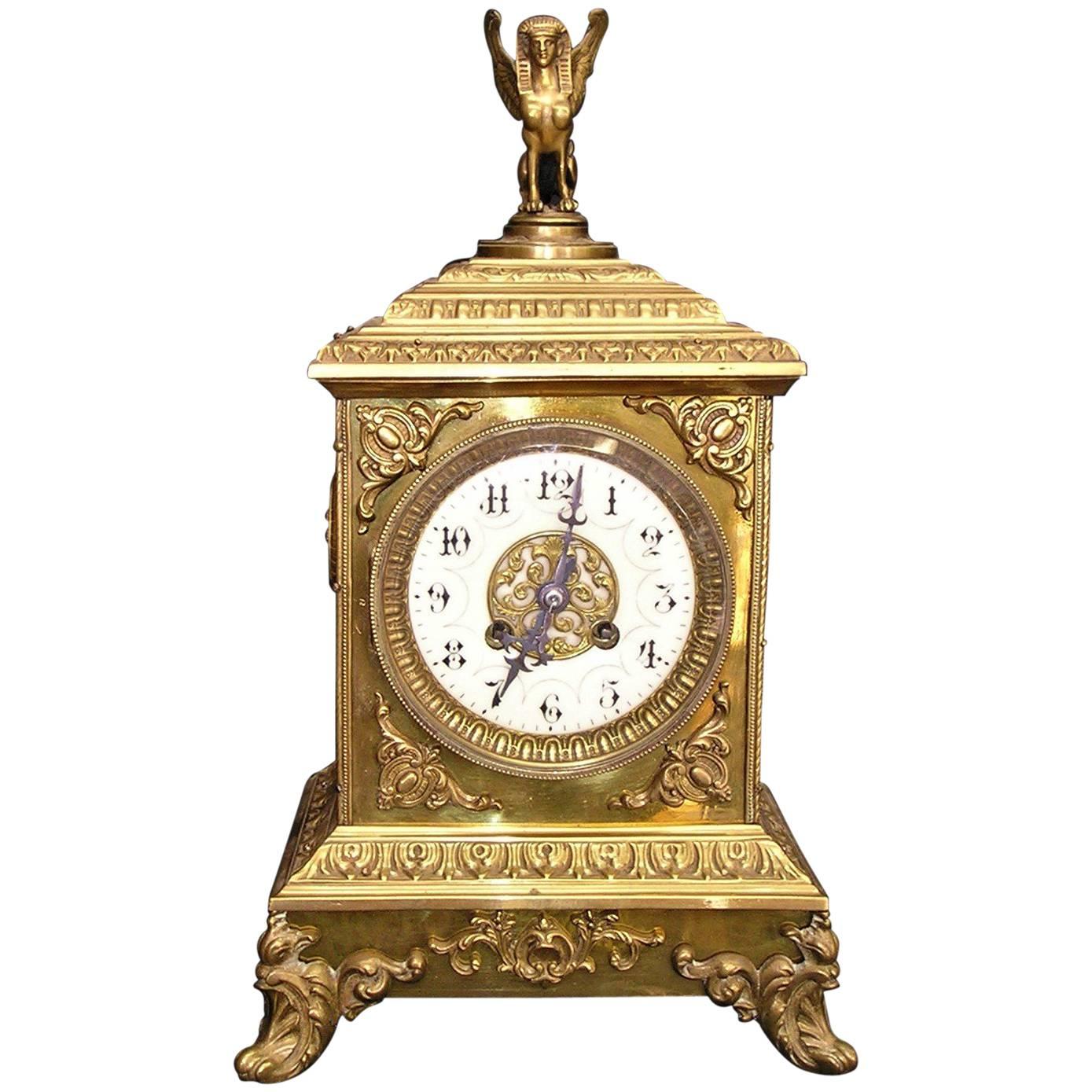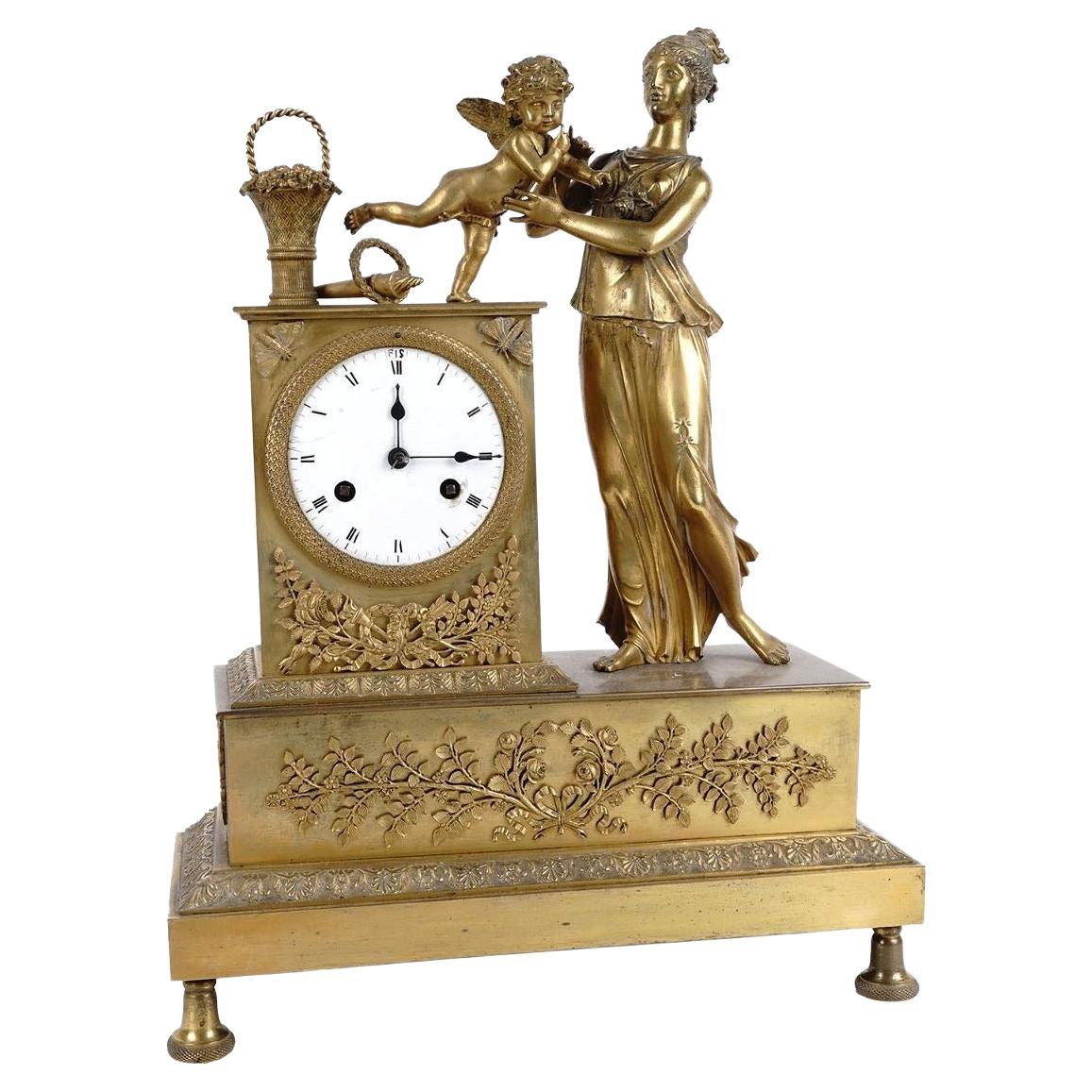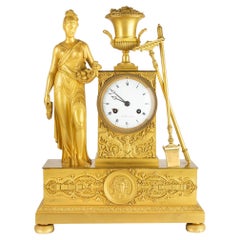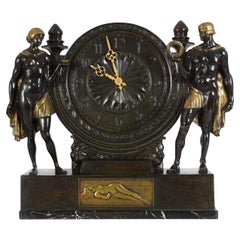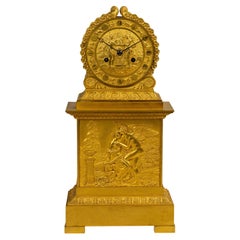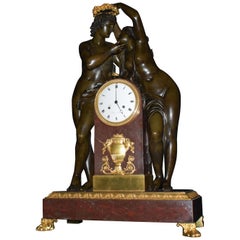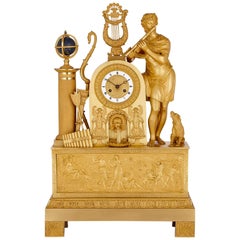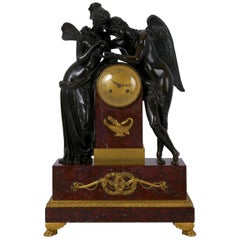
“Cupid & Psyche” French Empire Bronze Sculpture Mantel Clock, circa 1815
View Similar Items
Want more images or videos?
Request additional images or videos from the seller
1 of 21
“Cupid & Psyche” French Empire Bronze Sculpture Mantel Clock, circa 1815
About the Item
- Dimensions:Height: 22 in (55.88 cm)Width: 13.75 in (34.93 cm)Depth: 6.25 in (15.88 cm)
- Style:Empire (Of the Period)
- Materials and Techniques:
- Place of Origin:
- Period:
- Date of Manufacture:circa 1815
- Condition:Wear consistent with age and use. Minor losses. See condition notes in description text.
- Seller Location:Shippensburg, PA
- Reference Number:Seller: 912PFP14W | Silla, ltd.1stDibs: LU1059020273942
About the Seller
4.9
Recognized Seller
These prestigious sellers are industry leaders and represent the highest echelon for item quality and design.
Platinum Seller
These expertly vetted sellers are 1stDibs' most experienced sellers and are rated highest by our customers.
Established in 2009
1stDibs seller since 2014
469 sales on 1stDibs
Typical response time: 1 hour
More From This SellerView All
- French Empire Period Ormolu Bronze Mantel Clock of Ceres, circa 1815Located in Shippensburg, PAEMPIRE ORMOLU BRONZE FIGURAL MANTEL CLOCK OF CERES, GODDESS OF AGRICULTURE Movement by Etienne Tavernier; France, circa 1815 Item # 104HWG22Z A fine Empire period mantel clock with bun feet raising a rectangular base with a central portrait of Bacchus flanked by exquisitely chiseled motif of swirling foliage surmounted by a figure of the goddess Ceres grasping in her lowered hand a wreath woven with foliage and berries while in her garment she collects a bountiful harvest; she rests beside the clock tower with a framed lens opening to access the white enamel dial with black Roman numerals inscribed Etn. Tavernier set with Breguet style hands, raising an urn filled with fruits of the soil; against the tower rest the implements of labor, a shovel and flat rake. The movement is engraved "B". A significant clock movement maker, Etienne Tavernier (French, 1756-1839) is listed in Tardy's horology reference as working closely with the house of Abraham-Louis Breguet as well as providing clock movements...Category
Antique 19th Century French Empire Mantel Clocks
MaterialsBronze, Ormolu
- “Horatius & the Fall of Rome” French Empire Antique Bronze Mantel ClockLocated in Shippensburg, PAFRENCH RESTAURATION ORMOLU & PATINATED BRONZE FIGURAL MANTEL CLOCK OF ROMAN PHILOSOPHER HORATIUS Paris, circa 1820; silk-suspension movement signed "Etablissement Barbot de Paris" Item # 010CVX22A An incredibly fine Restauration period clock, it depicts a seated figure of the important Roman philosopher Horatius holding a scroll in his right hand while waving his hand over the results of war: ruins of a column and remains of an architectural mural...Category
Antique 19th Century French Empire Mantel Clocks
MaterialsBronze, Ormolu
- Austrian Art Deco Bronze Sculpture Mantel Clock by Anton Grath circa 1925By Anton GrathLocated in Shippensburg, PAART DECO FIGURAL MANTEL CLOCK Anton Grath (Austrian, b. 1881) patinated and burnished bronze over marble signed "Anton Grath" and foundry marking monogrammed "HW" within an "H" to right side of base Circa 1925 Item # 203AXG01W A powerful figural clock of a partially nude male and female raising offerings of a laurel wreath and an empty vessel, they face one another before the bold architectural display of the clock flanked by coned finials. They are loosely symmetrical in garb, the burnished bronze capes flowing gently around and before them. The circular face of the clock rests on a pair of sleeping lions over a textured bronze rectangular plinth with a burnished bronze bas-relief of a young woman lying in the grasses of a setting sun raised on a variated marble base. This model was acquired formerly at the Sotheby's, New York sale on April 14th 2008, [Sale N08427, lot 155, achieved $ 5,000 USD] and the patina was enhanced at some point in the last fourteen years to include the parcel-burnished highlights in the figures. The right side of the base includes the signature and a monogrammed foundry mark (HW within an H). A very fine period example. Artist Listings & Bibliography: *E. Benezit Dictionary of Artists, Vol. VI, Gründ, 2006, p. 592-593 *The Dictionary of Western Sculptors in Bronze, Mackay, Baron, 1977, p. 166 *Art Bronzes...Category
20th Century German Art Deco Mantel Clocks
MaterialsMarble, Bronze
- French Neo-Grec Antique Marble and Bronze Mantel Clock by BarbedienneBy F. Barbedienne FoundryLocated in Shippensburg, PAFRENCH NEO-GREC BLACK MARBLE AND PATINATED BRONZE MANTEL CLOCK Edited by F. Barbedienne Fondeurs, Paris (faded engraving on dial), movement by Charles Boye circa 1880-1900 Item # 303...Category
20th Century French Romantic Mantel Clocks
MaterialsMarble, Bronze
- French Bronze Sculpture "Reclining Greyhound" by Christophe Fratin, circa 1860By Christophe Fratin 1Located in Shippensburg, PA"RECLINING GREYHOUND" BY CHRISTOPHE FRATIN (FRENCH, 1801-1864) Signed in naturalistic base "FRATIN", foundry cold-stamped mark along edge "A. DAUBREE EDITEUR"; circa 1860 Item # 102EWL26Q An exquisite sand-cast model of Levrier Couché cast circa 1860, the sculpture is typical of Fratin's vivid texturing and silky finish. It was executed in the foundry of Alfred Daubrée...Category
Antique 19th Century French Romantic Animal Sculptures
MaterialsBronze
- Rare Edward Caldwell Art Nouveau Domed Architectural Bronze ClockLocated in Shippensburg, PAA VERY FINE ART NOUVEAU DOMED ARCHITECTURAL TABLE CLOCK Edward F. Caldwell & Co., New York, circa early 20th century an unsigned documented example Item # 307PQH13X An incredibly ...Category
20th Century American Art Nouveau Table Clocks and Desk Clocks
MaterialsBronze
You May Also Like
- French Empire Ormolu Mantel Clock Depicting Cupid & PsycheLocated in Los Angeles, CAExquisite early 19th century French Empire hand-chiseled ormolu mantel clock. Set on bracket feet and a rectangular base. Above, a superb inset plaque of Psyche and Cupid embracing c...Category
Antique 19th Century French Clocks
MaterialsBronze
- Empire Clock, "Cupid & Psyche"Located in Atlanta, GAA superb gilt and patinated bronze Empire clock. Rouge griotte marble. Signed bled a Paris. Silk thread suspension. France, circa 1804 Dimensions: Height 32" x width 21" x depth 11...Category
Antique Early 19th Century French Empire Mantel Clocks
MaterialsGriotte Marble, Bronze
- Empire Period Gilt Bronze Mantel ClockLocated in London, GBThis truly stunning French mantel clock was crafted during the Empire period, and reflects the Neoclassical interests of the Emperor Napoleon I, whose influence over the decorative arts contributed toward a profound revival of beauties of the ancient empires. The mantel clock is crafted entirely in gilt bronze, and features a stepped base on four block feet. The base depicts a Classical relief panel to the front, showing female dancing figures and putti, as well as musical instruments. Surmounting the base is an arch featuring a central mask fountain and basin...Category
Antique Early 19th Century French Empire Mantel Clocks
MaterialsOrmolu, Bronze
- French Empire Ormulu Bronze Mantel Clock, Lepaute, Thomire, Paris, circa 1815Located in Greven, DEOrmulu pendule with depiction of friendship and love Paris (Lepaute, Thomire) fire-gilt bronze Empire around 1815 Dimensions: H x W x D: 44 x 36 x 13 cm French pendulum movement with eight days duration. Thread suspension and lock disc striking movement with strike on bell on the half and full hour. White enamel dial with Roman hour numerals and Breguet hands. Signature: LePaute & Fils / Hrl. du Roi (Pierre-Basile Lepaute (1750 - 1843) with his son Pierre-Michel Lepaute (1785-1849); from 1811 in joint workshop). Description: The extremely high quality pendulum shown here takes up a profound theme: Friendship, which combines with love and can thereby outlast time and death. As it is typical for the epoch of classicism, personifications and symbols are taken from the fund of ancient mythology and art and then developed further. The main figure is a young woman in an antique, girded garment, standing barefoot and with crossed legs next to an altar, on which she is leaning with her left elbow. She gracefully bows her head towards a tempestuously approaching Cupid, grasps his right hand with her left and draws him to her bosom, the seat of the heart. The delicate ambivalence of flying towards and being held culminates in the trustingly intimate look that the two cast at each other. The young woman personifies friendship, the winged Cupid love. As a sign of their intimate connection, two burning hearts appear on the altar next to the two, framed by the puffed scarf, which are closely bound together by a chain of flowers. Next to them, on the altar slab, one can see an erected book with the title "Amitie" (French: amitie, friendship). Supporting the book is a pomegranate held by a ring of pomegranate flowers. The bursting seeds spill out of the cracked skin. Since ancient times, the pomegranate and its blossoms have been dedicated to the goddess Persephone, symbolizing the underworld and death, but also life and fertility. The myrtle interwoven in the pomegranate flower wreath of "friendship" also has a far-reaching symbolic power: the plant was dedicated to the goddess Aphrodite, stands for virginity, and was and is therefore obligatory in the bridal wreath...Category
Antique Early 19th Century French Empire Mantel Clocks
MaterialsBronze, Enamel
- 19th French Empire Mantel Clock, Pendule, Mercury, Gilded Bronze, circa 1815Located in Greven, DE19th century French pendule, mantel clock - Mercury the messenger of the gods France Bronze gilded Empire around 1815 Dimensions: H x W x D: 37 x 30 x 10 cm Description: French Empire...Category
Antique Early 19th Century French Empire Mantel Clocks
MaterialsBronze
$6,737 Sale Price30% Off - French Empire Gilt Bronze Mantel Clock with Venus and CupidLocated in London, GBFrench Empire gilt bronze mantel clock with Venus and Cupid French, early 19th Century Measures: Height 53cm, width 37.5cm, depth 13.5cm This fine Empire period mantel clock is crafted from gilt bronze. The clock includes a sculptural surmount of Venus accompanied by Cupid. Venus sits atop the square clock...Category
Antique Early 19th Century French Empire Mantel Clocks
MaterialsBronze, Ormolu
Recently Viewed
View AllMore Ways To Browse
Bronze Dagger
Antique Mantel Lamps
Serpent Lamp
Antique Butterfly Ring
Oil Lamp Empire
Bronze Nut
Antique Glass Clock Domes
Glass Dome Antique Clocks
Antique Glass Dome Clock
Antique Glass Dome Clocks
Antique Clock Glass Dome
Glass Dome Clocks Antique
Butterfly Pierre
Antique Clock With Glass Dome
Body Dome Ring
Mantel Clock Dome
Psyche And The Butterflies
Domed Top Ring
